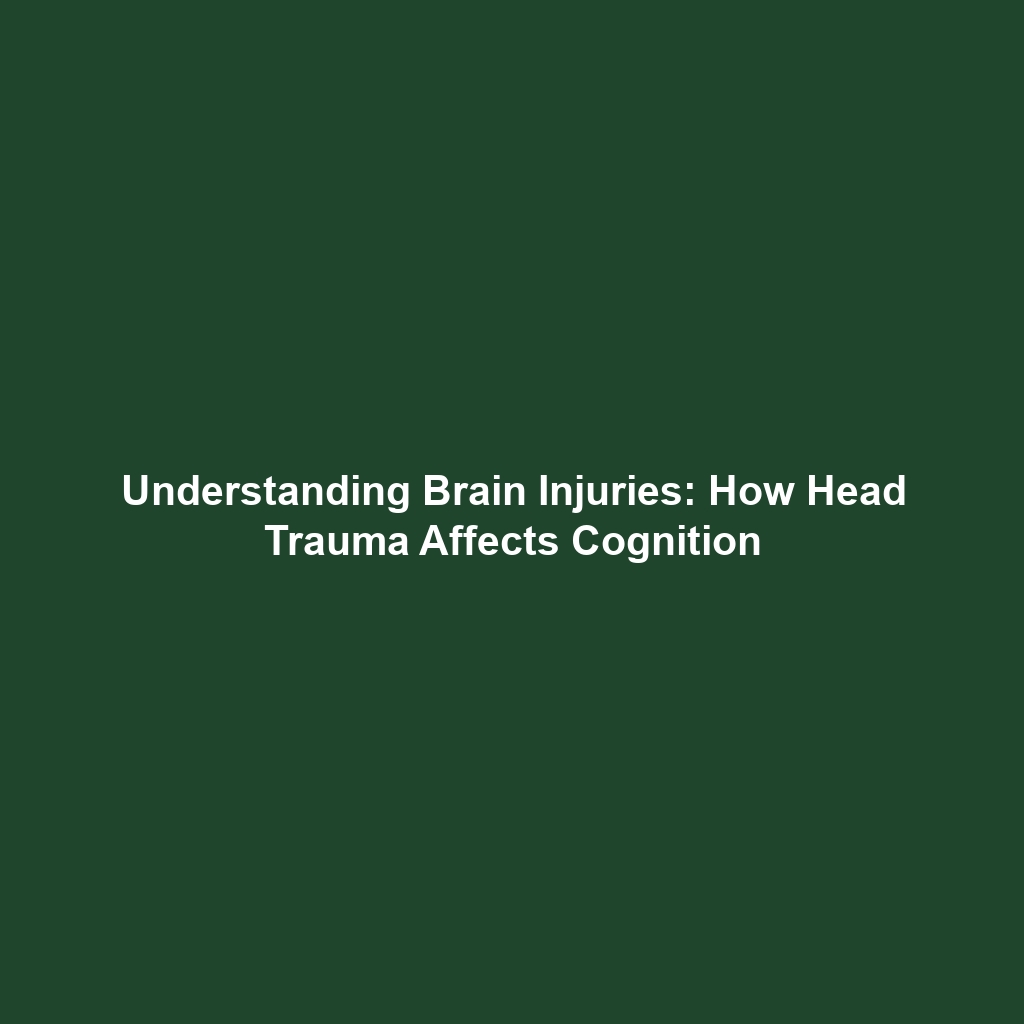Causes: Traumatic Impacts to the Head and Brain Injury in Biomechanics
Introduction
Traumatic impacts to the head represent a critical concern within the field of biomechanics, significantly affecting memory, cognition, and emotional regulation. The underlying mechanics of how these injuries occur, and their outcomes, are essential for understanding the human body’s response to trauma. Biomechanics, as a discipline, investigates the forces involved during such impacts and their implications for health and rehabilitation. This article delves into the causes and consequences of head trauma, highlighting its significance in biomechanics.
Key Concepts
Understanding Head Trauma
Traumatic brain injury (TBI) results from external mechanical forces impacting the head, classified into various forms, including concussions and contusions. Key biomechanics principles associated with head injury include:
- Impact Forces: Understanding the magnitude and direction of forces that lead to brain injuries.
- Acceleration and Deceleration: The role of rapid changes in speed during collisions and falls in causing TBI.
- Cranial Anatomy: The significance of skull structure in protecting the brain from injury.
These concepts collectively illustrate how biomechanical assessments can inform the prevention and treatment of injuries related to traumatic brain incidents.
Applications and Real-World Uses
The understanding of how traumatic impacts lead to brain injuries has practical implications in several areas:
- Sports Safety: Implementing injury prevention measures in contact sports.
- Automotive Design: Developing safer vehicle features to minimize head injuries in crashes.
- Workplace Safety: Improving protective gear in high-risk occupations to reduce the likelihood of TBI.
These applications underscore how knowledge of biomechanics and head trauma is crucial in enhancing safety protocols across various sectors.
Current Challenges
Despite advances in understanding traumatic brain injuries, several challenges persist:
- Underreporting: Many TBIs go unreported, especially in sports.
- Variability in Symptoms: The different ways individuals experience and recover from head injuries complicate diagnosis and treatment.
- Research Limitations: Ethical constraints in studying human subjects limit the scope of biomechanical research on TBI.
These issues continue to hinder progress in effectively mitigating the risks associated with head trauma.
Future Research and Innovations
Looking ahead, significant innovations in the study of traumatic brain injuries are on the horizon:
- Wearable Technology: Advances in sensors that monitor impacts in real-time could help prevent TBIs.
- AI and Data Analysis: Emerging technologies for predictive analytics in sports and workplace environments.
- Enhanced Rehabilitation Techniques: Research focused on neuroplasticity and recovery from brain injuries.
These developments promise to improve both preventative measures and rehabilitation processes for TBI.
Conclusion
In summary, the causes and consequences of traumatic impacts to the head encompass a significant area of study within biomechanics. This field not only seeks to understand the mechanical forces involved but also critically informs safety practices and rehabilitation strategies. To further explore this topic, consider reading our related articles on sports safety or brain injury recovery techniques.
